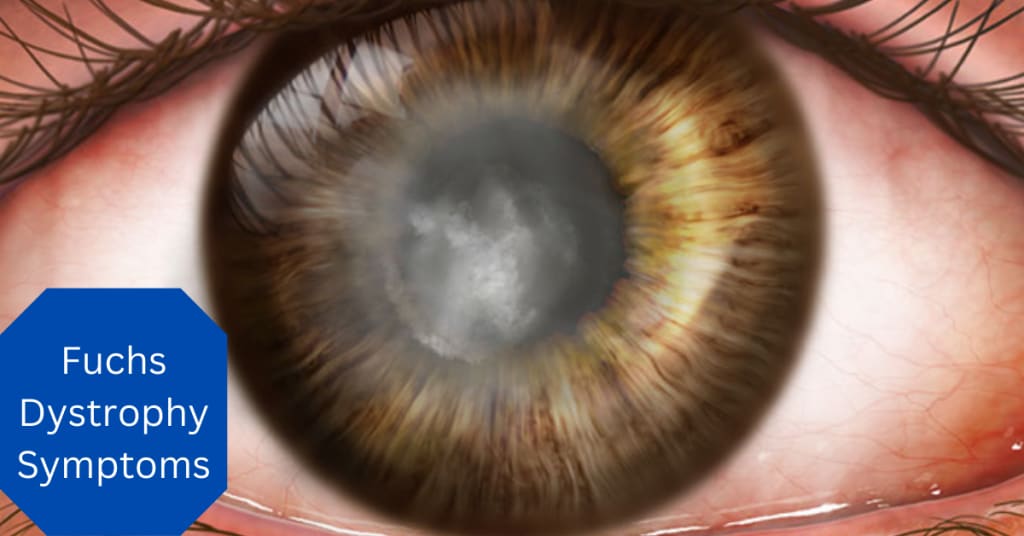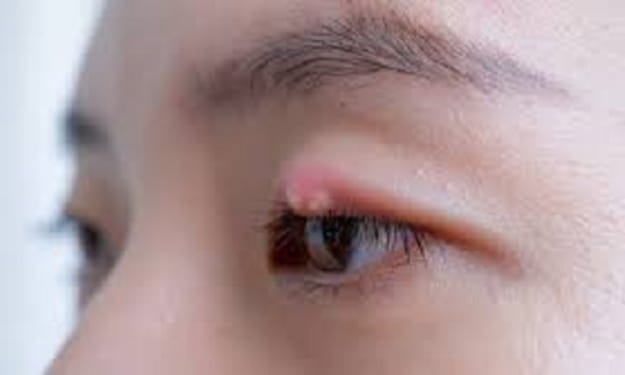The Complete List of Fuchs Dystrophy Symptoms and Signs
What Is Fuchs Dystrophy?

OVERVIEW
Fuchs dystrophy is also known as Fuchs corneal endothelial dystrophy. It is a sporadic condition with few cases of autosomal dominant inheritance. It is a disease of the endothelial layer of the cornea. Disturbance in this layer of the cornea will result in Fuchs dystrophy symptoms.
Fuchs dystrophy is much more common in females than males and is suggested to run in families.
At a young age, the endothelial layer count is thick while with aging the layer gradually becomes thin. The loss of endothelial layer cell leads to disruption of the layer and swelling of the cornea. This leads to Fuchs dystrophy symptoms such as glare, blurred vision, and photophobia. The endothelial cell loss can be caused due to corneal surgery or cataract surgery.
The Fuchs dystrophy symptoms can disturb the normal routine life of a person, so its timely recognition and treatment are important.
FUCHS DYSTROPHY ICD 10
What is the ICD 10 code for Fuchs dystrophy?
The Fuchs Dystrophy ICD-10 code is H18.50. This code is used for other dystrophies of the cornea as well and can be further specified with additional codes to indicate Fuchs Dystrophy. For example, the code H18.51 can be used to indicate Fuchs Endothelial Dystrophy and H18.52 can be used to indicate Fuchs Combined Dystrophy. It's important to note that the correct code may vary depending on the specifics of the patient's condition, and it's always best to consult with a healthcare provider for accurate coding.
FUCHS DYSTROPHY GENETICS
What is the genetical history of Fuchs dystrophy?
Fuchs dystrophy is an autosomal dominant condition. In this disease inheritance of one mutated chromosome will lead to the disease condition. However, it is not necessary that everyone inheriting the gene will develop the disease. The most commonly known gene mutation in Fuchs dystrophy occurs on COL8A2 and TCF4 genes.
COL8A2 mutation plays a role in the formation of abnormal protein deposits in the cornea. TCF4 gene mutation is responsible for the loss of endothelial cells. Both changes are associated with Fuchs dystrophy pathology.
FUCHS DYSTROPHY CAUSES
What causes Fuchs dystrophy?
The cause of Fuchs dystrophy is not exactly known however it is postulated that it is a genetical condition and the disease run in families.
FUCHS DYSTROPHY SYMPTOMS
What are the symptoms of Fuchs dystrophy?
Fuchs Dystrophy Symptoms include
• blurred vision, particularly in the morning or after waking up,
• photophobia
• halos around lights
• pain or discomfort
FUCHS DYSTROPHY SIGNS
What are the signs of Fuchs dystrophy?
The signs of Fuchs dystrophy include corneal clouding and a significant decrease in vision. Other signs include the following.
1. Endothelial Decompensation: Endothelial decompensation is caused by the loss of endothelial cells gradually leading to central stromal edema. The edema results in blurring and photophobia of vision especially early in the morning.
• Epithelial Edema: In more advanced cases the epithelial edema leads to the formation of microcyst and bullae resulting in discomfort due to the rupture of bullae. It is associated with marked pain due to the exposure of the nerve endings. In long-standing cases, sub-epithelial scaring may form resulting in a significant decrease in vision.
• Cornea Guttata: Cornea guttate are warts on the surface of the Descemet membrane secreted by abnormal secreting endothelial cells.
DIAGNOSIS OF FUCHS DYSTROPHY
How is Fuchs dystrophy diagnosed?
Fuchs dystrophy will be diagnosed by an ophthalmologist through a comprehensive eye examination. The corneal endothelial count can be assessed with the help of specular microscopy and pachymetry. The specular microscopy will show a dark spot giving a mosaic pattern of endothelial cells, also beaten bronze appearance can be spotted.
Fuchs Dystrophy Treatment
What is the treatment for Fuchs dystrophy?
There is no specific treatment for Fuchs dystrophy as there is loss of endothelial cells, no replacement can be done for the lost endothelial cells. In initial cases and in mild cases topical eye drops and ointments can be used, however, in advanced cases, surgery can be done. Regular checkups and reviews with the relevant ophthalmologist are important.
Conservative treatment:
Eye Drops for Fuchs Dystrophy
There are multiple eye drops used in the management of Fuchs dystrophy. However, these drops will not help the underlying condition, pain can be reduced with these measures. The eye drops include
1. Hypertonic saline drops: Topical sodium chloride 5% drops or ointments are used initially. These drops help to reduce corneal swelling by drawing excess fluid out of the cornea. They are typically used to manage mild to moderate symptoms of Fuchs Dystrophy.
2. Pressure lowering drops: There is an associated rise in intraocular pressure with Fuchs dystrophy. Pressure-lowering drugs can play an important role.
3. Cycloplegic drops: cycloplegic drugs help in the dilation of the iris muscle and hence help in reducing pain.
4. Steroid drops: Steroid drops help to reduce inflammation and swelling in the cornea, which can help to alleviate symptoms of Fuchs Dystrophy. However, long-term use of steroid drops can have side effects, so they are typically used for short periods of time.
5. Antibiotic drops: Antibiotic drops may be prescribed to prevent infection in the eyes, which can be a risk in people with Fuchs Dystrophy. These drops can help to prevent or treat bacterial infections.
6. Lubricating drops: Lubricating drops can help to alleviate dryness and discomfort in the eyes, which is a common symptom of Fuchs Dystrophy. They work by adding moisture to the eyes and can be used as often as needed.
Other measures:
These include the use of a hair dryer for corneal dehydration and anterior stromal puncture may help in a few cases.
Fuchs Dystrophy New Treatment
Although there was no treatment option available until now, now studies have shown that few treatment options can be used in order to reduce the disease progression and manage the disturbing painful symptoms associated with the disease.
1. Rho-kinase inhibitors: Topical Rho kinase is a new treatment option for Fuchs dystrophy. The enzyme helps in improving the function of endothelial cells and hence improving corneal clouding. However, researchers are going on to check the efficacy of this drug in more detail.
• Keratoplasty: In advanced cases of Fuchs dystrophy keratoplasty may be the option for treatment. Keratoplasty aims at replacing the damaged corneal endothelial cells and its replacement with healthy donor corneal cells. It includes posterior lamellar (Descemet membrane stripping endothelial keratoplasty- DSAEK or Descemet membrane endothelial keratoplasty- DMEK and penetrating keratoplasty that has a successful result.
• Conjunctival flaps and amniotic membrane transplantation: In eyes with poor visual outcome conjunctival flaps and amniotic membrane transplantation can be another option.
• Gene therapy: Gene therapy is still in the experimental stages. It aims at replacing the gene responsible for the disease condition which will result in reducing the progression as well as completely treating the disease entity.
• Fuchs Dystrophy and Cataract Surgery: Cataract surgery is a procedure most commonly known to result in the loss of endothelial cells. However, in patients with Fuchs dystrophy and associated cataract, certain precautions should be taken to avoid worsening the condition. A triple procedure is a strategy known for Fuchs dystrophy associated cataracts. In this procedure cataract surgery is combined with lens implantation and keratoplasty, resulting in a good visual outcome.
for more details click here
About the Creator
sadia ayaz
My name is Dr. Sadia Ayaz and I am an ophthalmologist and eye surgeon. My medical degree is from Pakistan, I have done FCPS-1 / IMM from the College of Physicians and Surgeons Pakistan.





Comments
There are no comments for this story
Be the first to respond and start the conversation.